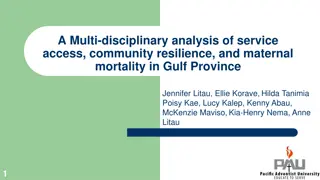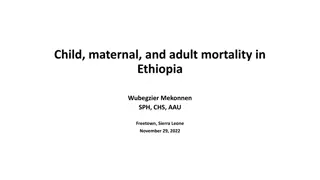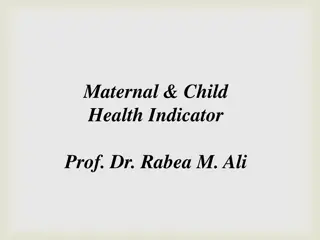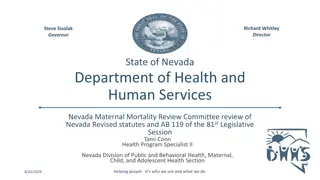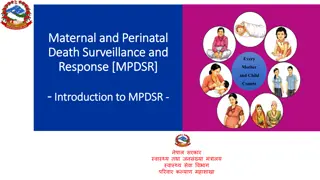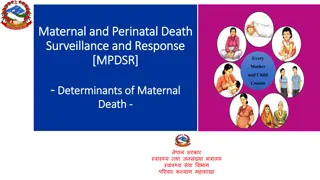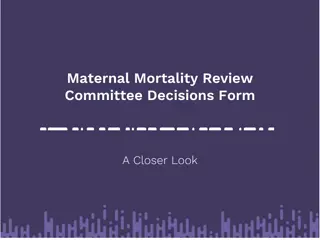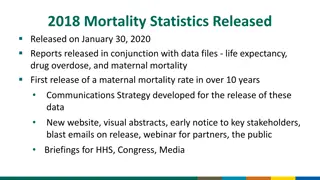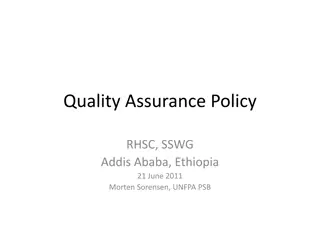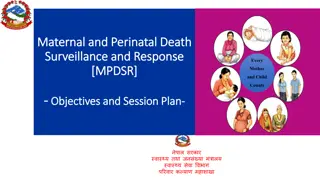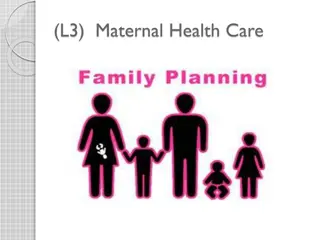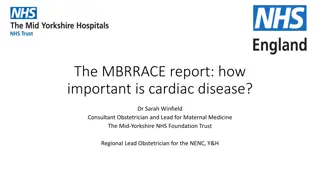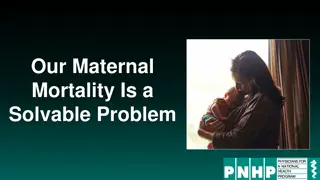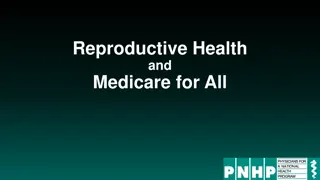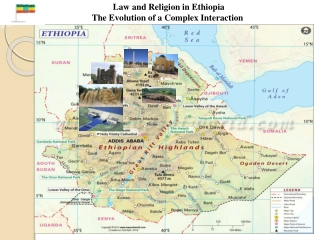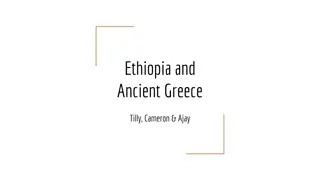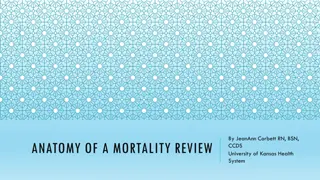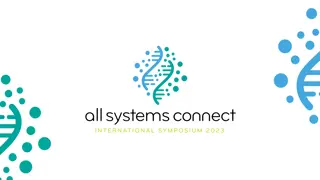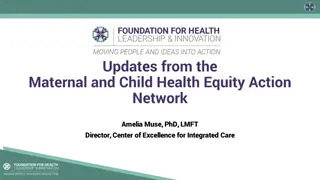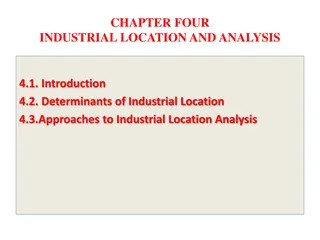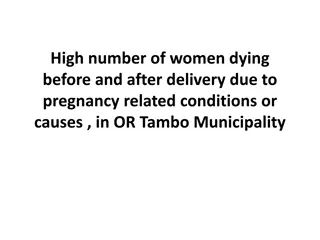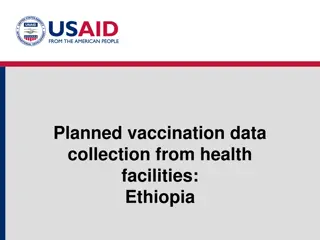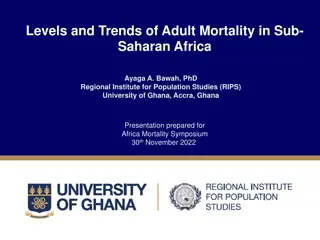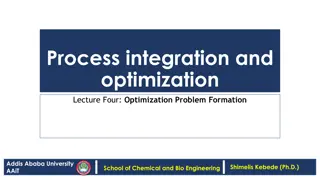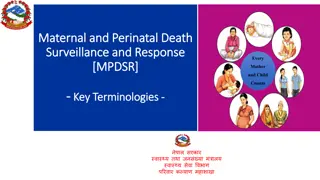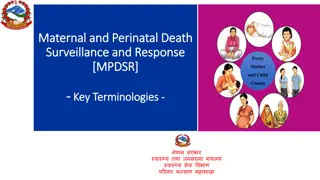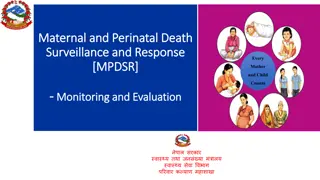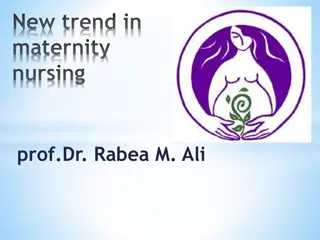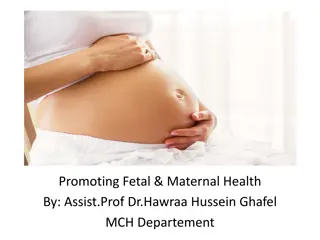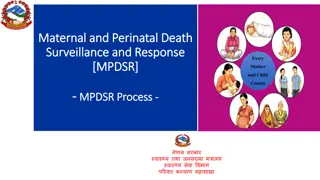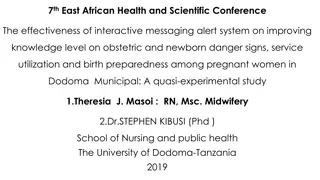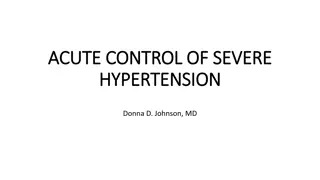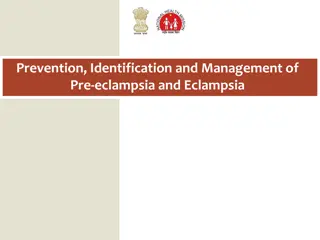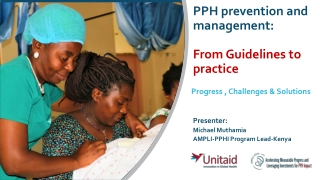Understanding Maternal Mortality in Addis Ababa, Ethiopia: 2017-2021 Analysis
Delve into the intricate factors contributing to maternal deaths in Addis Ababa, Ethiopia, from 2017 to 2021. The study explores causes, trends, and implications for maternal health, emphasizing the need for targeted interventions and improved healthcare systems.
Download Presentation

Please find below an Image/Link to download the presentation.
The content on the website is provided AS IS for your information and personal use only. It may not be sold, licensed, or shared on other websites without obtaining consent from the author. Download presentation by click this link. If you encounter any issues during the download, it is possible that the publisher has removed the file from their server.
E N D
Presentation Transcript
Analysis of Maternal Death Surveillance and Response Data 2017-2021: Causes and Contributing factors in Addis Ababa, Ethiopia Sisay T, Tolcha K, Abdulnasir A, Abrham L
Presentation outline Background Methods Results and Interpretations Conclusions Recommendations Acknowledgement
Background Maternal death is a complex event to understand as it s interwoven with different determinants: Healthcare system (Hamal M, 2022), Socio- Cultural (Mother R, 2012), Economic (Adgoy ET, 2018), Environmental (Kaur M et al 2018), and Political (Melberg A et al 2019) factors MMR is one of the SDGs indicator
Backgroundcontd Ethiopia is amongst countries with the high burden: Fertility rate of 4.6 per women (EDHS 2019) and Life time risk of maternal deaths 1 in 55 (WHO 2017) MMR of 412 per 100,000 live births (EDHs 2016) According to EDHS 2016, Addis Ababa has reproductive health service coverage of over 96%
Backgroundcontd This study was conducted to describe mortality data and identify the causes and contributing factors of maternal deaths in Addis Ababa, Ethiopia
Methods Study area: Addis Ababa, capital of Ethiopia Has a total population of 3.8million: 1.2 million are women in 15-49 years (CSA, 2013)
Methodscontd Data source: Five year [2017-2021] MDSR data was extracted from national PHEM centre Maternal Death Case Based Reporting Format (MDCRF) includes: Socio-demographic, ANC, timing of death in relation to pregnancy, causes and contributing factors [EPHI, 2017]
Methodscontd Data management & analysis: Microsoft Excel 2010: Cleaning, editing, coding and categorization Descriptive analysis such as mean, proportion and ratio SPSS for other descriptions, including cross- tabulations, chi-square test, CI estimation Ethical consideration Written permission was obtained to access the data from Ethiopia Public Health Institute (EPHI)
Results & interpretations In five years period (2017 to 2021): A total 324 maternal death was reported to the national PHEM centre The mean age at death was 28.21 5.18 years 207 (63.9%) of them were in age range of 25-34 years One-fourth of them had no formal education Around 2/3 (63.3%) of them had first ANC Nearly 93% (299) maternal deaths occurred in health facilities
Results and contd MMR over the five year period was 77.16 per 100,000 live births Limitation due to lack of appropriate denominator
Results and contd Causes of maternal death Direct cause = 87% Haemorrhage is the leading cause (50%), Hypertensive disorders in pregnancy (22%), puerperal sepsis (15%), and embolism (10%) Indirect cause = 13% Anaemia (56%), HIV/AIDS (32%) and TB (12%)
Results and contd Causes of Maternal Death, Addis Ababa, 2017-2021
Results and contd Contributing factors of maternal death Over half, 184 (57%), of the deceased mothers faced delay in receiving care after reaching health facilities Delay to seek care contributed for 34% of maternal deaths Delay to reach health facilities contributed 24% of maternal deaths
Conclusions Maternal mortality ratio has been declining in Addis Ababa over past five years Majority of the maternal deaths are avoidable which is overwhelmingly due to the delays in providing quality care at health facilities
Recommendations Improving maternity care system, focusing on the quality and scope of care available at existing facilities Improving referral system, and other factors that hiders the women from seeking healthcare and reaching health facilities for obstetric care Further investigations of the type II and III delays
Acknowledgment Special thanks to: Ethiopia Ministry of Health and FETP- Intermediate Stakeholders: CDC, AFENET, EPHA Ethiopian Public Health Institute
References 1. World Health Organization. International Statistical Classification of Diseases and Related Health Problems. -10th revision, Fifth edition [Internet]. Fifth. Vol. 1, World Health Organization. Geneva; 2016. Available from:http://www.who.int/classifications/icd/icdonlineversions/en/ 2. World Health Organization. Trends in maternal mortality 2000 to 2017: estimates by WHO, UNICEF, UNFPA, World Bank Group and the Unites Nations Population Divisions. World Health Organization. Geneva; 2019. 3. Ethiopian Public Health Institute. National Technical Guidance for Maternal and Perinatal Death Surveillance and Response 2017 [Internet]. Addis Ababa; 2017. Available from: https://www.ephi.gov.et/images/pictures/National-Maternal-and-Perinatal--Death-Surveillance-and- Response-guidance-2017.pdf 4. Aden JA, Ahmed HJ, stergren P. Causes and contributing factors of maternal mortality in Bosaso District of Somalia . A retrospective study of 30 cases using a Verbal Autopsy approach. Glob Health Action [Internet]. 2019;12(1):1672314. Available from: https://doi.org/10.1080/16549716.2019.1672314 5. Mgawadere F, Unkels R, Kazembe A, Broek N Van Den. Factors associated with maternal mortality in Malawi: application of the three delays model. BMC Pregnancy Childbirth. 2017;219(17):1 9.


